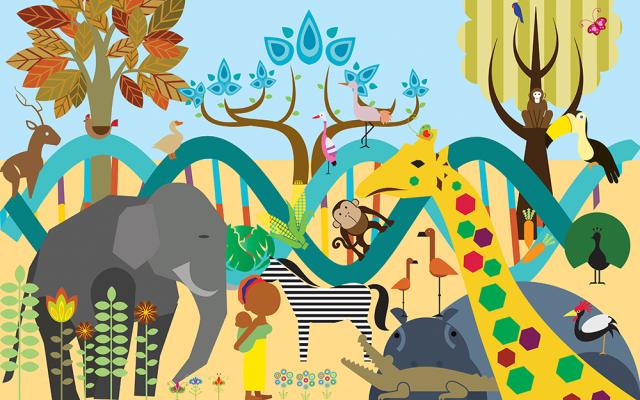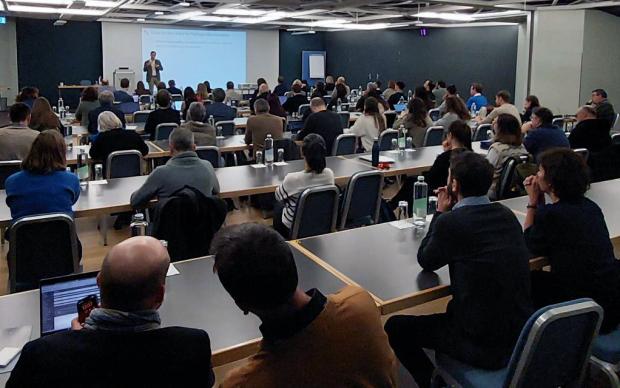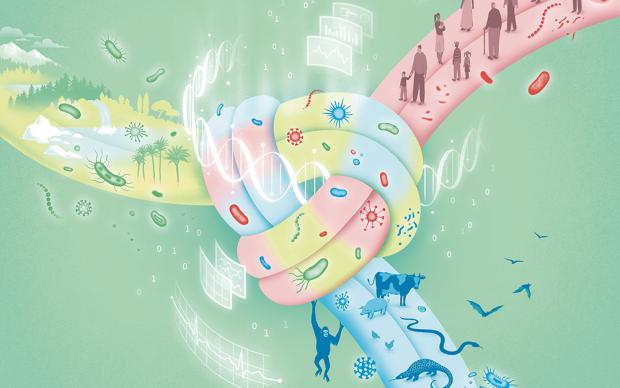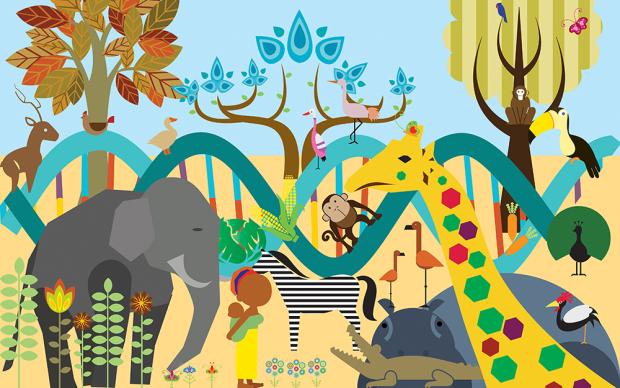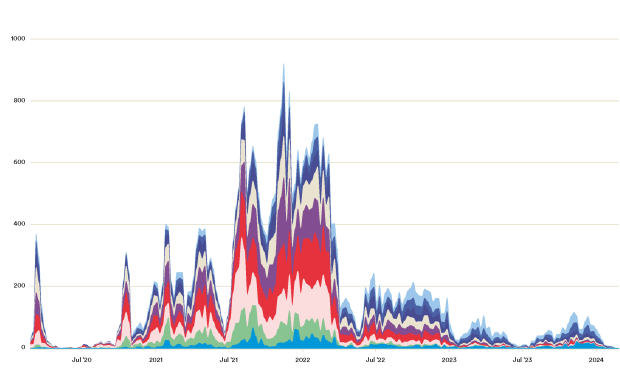Why approaching health from multiple perspectives matters
How does climate change influence animal health? What will the next epidemic threat be? To answer these questions, knowledge on human, animal and environmental health must be leveraged. Bioinformatics is one of the keys.
The One Health concept recognizes how human, animal and environmental health are interconnected. COVID-19 highlighted, for instance, how environmental destruction can bring new epidemics by increasing the risk of transmission of pathogens from animals. However, harnessing vast amounts of information from various sources (e.g. DNA, climatic and clinical) is not straightforward. Find out how our science helps researchers and governments to improve pandemic preparedness, assess the impact of poor environmental health or join forces internationally.
To better grasp cross-impacts between humans, animals and the environment
The pangenome: insights into species’ adaptability to environmental change
Pangenomes represent the collective genetic diversity found within a species, inferred from the DNA of multiple individuals of the same species. Studying them allows scientists to identify traits that allow species to adapt to environmental changes or that confer resistance to pathogens. In 2023, SIB’s Robert Waterhouse co-authored a study of the first pangenome of the ecologically and economically important pollinator, the Asian honeybee. It revealed functional features related to the climatic adaptive capacity of the insect.
Unlocking the potential of microbes to make plants climate resilient
SIB is part of a newly launched pan-European project looking at how microorganisms can improve the climate resiliency of plants and crops.
Anticipating human-pet virus transmission
The interaction between human hosts and animal reservoirs is of crucial importance both for understanding current epidemics and for better anticipating future zoonotic pandemics. The SIB Resource V-pipe has been used on samples provided by VetSuisse from viral tests on companion pets living in proximity with SARS-CoV-2-infected owners. Results have helped gain a better understanding of the transmission chains between humans and their pets, and among the animals themselves.
Tracing mosquito evolution to better understand disease transmission patterns
Researchers used the SIB Resource OMA as a starting point to build a complete list of similar genes found in different species of mosquitoes. This was instrumental in tracing the evolution of mosquitoes and revealing their history of host use. The findings have significant implications for understanding disease transmission patterns and informing both medical and ecological strategies.
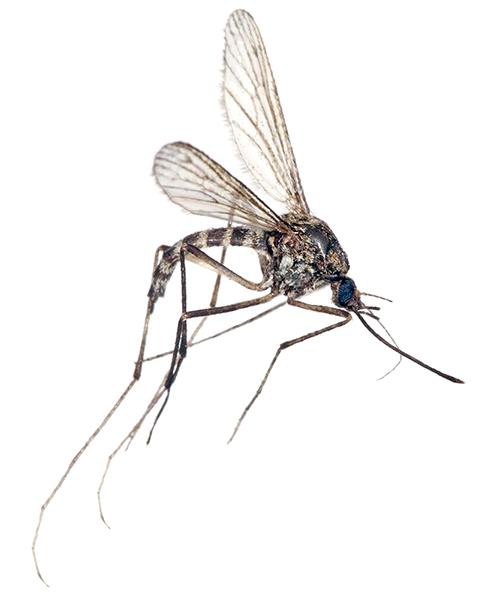
Overcoming marine plastics pollution
Researchers discovered that a few tiny sea creatures can break down a type of plastic called PBS. Using the SIB Resource SwissDock, part of SwissDrugDesign, they found enzymes that might be responsible for this process and identified a particularly promising one, PBSase. This finding could contribute to a more sustainable society through further utilization of PBS.
To be better prepared for a new epidemic
A nationwide One Health data exchange platform to improve pandemic preparedness
The Swiss Pathogen Surveillance Platform (SPSP) is a shared secure surveillance platform between human and veterinary medicine, which also includes environmental and foodborne pathogens. It is managed by SIB in collaboration with the University Hospitals of Basel, Lausanne and Geneva, as well as the Universities of Bern and Zurich.
The platform enables rapid and detailed monitoring of pathogen transmission and epidemics using whole genome sequencing data and associated metadata from bacteria, viruses and fungi. It features controlled data access, complex dynamic queries, dedicated dashboards and automated data sharing with international repositories, providing actionable results for public health.
